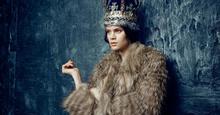PMAI® Archetypes and Trust
I grew up in a home of little trust. My dad was an abuser—I never knew who was going to come through the door each evening. I only met my father’s father once, and that was enough to know why my father turned out like he did. Add to this, my mother was an orphan. She would boast about being a runaway. She was taken in and raised by the Shaker religious sect, yet Mom trusted no one. Dad didn’t trust anyone. Hence, I grew up skeptical of everyone, too. It didn’t help that, at almost forty years old and twenty years into my first marriage, my wife ran off with someone else and didn’t return. You could say that, to this day, I have trust issues.
So, why did I write a book on trust? What I discovered in my almost seventy years of life, as I reflected on these stories, was that these imprints from the past were severely impacting relationships in the present. Something had to change. Then I added to my calculation what I learned after coaching hundreds of leaders over the past thirty years: that our past informs our present and can often predict the future.
However, when I began to understand more fully the meaning of archetypal imprints, I started to not just understand my past but also find victory over my fear of trust in the present. What I discovered was that I had a unique trust language. We are all probably very familiar with Gary Chapman’s The 5 Love Languages (1992). I would not pretend that my work on trust is in his category of thinking or expertise, but after many years of work centered around archetypes, I have observed unique patterns in both my clients and friends. Consider the following thoughts about trust and archetypal imprints:
- The Warrior archetype tends to have a performance trust (you must perform).
- The Caregiver archetype tends to have a supporting trust (you must let them help).
- The Orphan (Realist) archetype tends to have a suspicious trust (you must beware).
- The Innocent (Idealist) archetype tends to have blind trust (you do nothing to earn their trust).
- The Seeker archetype tends to have emerging trust (it must unfold and evolve).
- The Lover archetype tends to have relational trust (you must connect with them).
- The Destroyer (Revolutionary) tends to have efficient trust (don’t waste their time).
- The Creator tends to have constructing trust (let them build something).
- The Ruler tends to have systematic trust (they must be in charge and organize everyone).
- The Magician tends to have transformative trust (they must change something or someone).
- The Sage tends to have competent trust (you must know something).
- The Jester tends to have easy trust (you must not make it complicated; make it fun).
Our archetypal imprints from the past do not just give us an understanding of our behaviors but also inform us about how we establish trust with others. Knowing the archetypes of someone’s past can equip us with the necessary language we need to build trust with them in the future. Using language for someone who has a heavy life story of the Warrior (that demonstrates this need to perform and to be strong) with someone who has the life story of the Caregiver (that demonstrates the need for them to help you) can cause an obvious disconnect. Think about it—the Warrior doesn’t want help. The Warrior tends to think they can do it alone. Yet, the Caregiver has learned all their life to help others. If the Warrior does not want, need, or value the natural servant heart of the Caregiver you can see a gap in their trust-connection. If, however, the Warrior allows the Caregiver to be engaged by helping, they both can begin to trust one another at an increased pace, assuming the Caregiver’s help is up to the standard of the Warrior’s mentality and the Warrior’s response is genuinely valuing said help of the Caregiver.
Our life stories and journeys contribute to our definition of how we trust. I often start my sessions on archetypes and trust by asking everyone to write out a very simple and pithy sentence answering this question: “How do you build trust into another person’s life?” As they stand up and walk around the room to compare their answers with others, we discover two things: First, few have the same answer. This teaches us immediately that we define trust and how to build it quite differently. (I would propose that their pithy sentence is rooted in their archetypal story.) The second thing we learn is that almost always they get the answer wrong. The only correct answer to a question about how you build trust into another person’s life is: “It depends on who the other person is and what they need from me to trust me.” Seldom does anyone answer that way. Instead, they respond with what they need in their own life to build trust.
Anecdotal evidence is not the best research to prove the premise of my book, but that one question does demonstrate our mindset toward trust. My book, TRUST! Using Archetypal Language to Repair Broken Trust (2023), is my attempt to further our conversation on trust and how we can bridge the trust gap using knowledge of our PMAI® archetypes. It is one writer’s opinion based upon almost seventy years of life and an archetypal story forged in the Orphan (Realist) archetypal imprint. I have learned to transform the imprint “be suspicious!” with “learn how others trust!” And you can, too.




.png)










_thumb.png)
_thumb.png)
